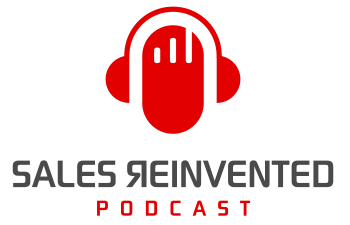
Episode #7 Chase Sutton

Meet
Chase Sutton
Chase Sutton is a Business Development Manager with 15 years of experience at 3M’s Abrasive Systems Division. Based in Wichita, KS, he specializes in managing large multi-location strategic accounts. From developing National Business Agreements to creating rollout plans that support reps in manufacturing facilities across the US and Canada, Chase is the QB for 3M ASD in companies operating in the Heavy Metal Fabrication space. Chase also achieved S-5 in under 10 years at 3M. He has now reached the pinnacle of sales representatives at two Fortune 500 companies (Procter & Gamble- Senior Consultant). Chase graduated with a degree in Marketing from Fort Hays State in Hays, KS. He has been married to Melany for 26 years and is a #GIRLDAD to 2 daughters, Brynn, 17, and Harper, 12. Fun Fact: Chase was the first ever college graduate on both sides of his family.
Our Mission Is To Change The Negative Perception Of Sales People
Our Vision Is A World Where Selling Is A Profession To Be Proud Of
In this episode, I’m with Chase Sutton, Business Development Manager at 3M, as we tackle one of the toughest challenges in sales: mastering negotiation and selling price increases without resorting to discounting.
Chase has over fifteen years of experience managing major accounts in heavy metal fabrication and shares real-world strategies for navigating tough conversations about price hikes. He reveals common objections customers raise, the importance of communicating value, and actionable techniques for reframing pricing discussions with confidence and empathy.
Whether you’re a sales pro facing tough procurement professionals or just looking to sharpen your negotiation skills, this episode is packed with practical tips, memorable success stories, and Chase’s top dos and don’ts for successful negotiations.
Outline of This Episode
- [0:00] Common customer objections to price increases
- [3:15] Choose a deposit mindset over an IOU mindset, enabling easier justification for price increases
- [8:29] Focus on the total cost of ownership over piece price for greater savings
- [10:26] Real-life stories of responding to tough procurement challenges
- [14:53] Don’t apologize; don’t promise price reductions; don’t make assumptions. Ask questions to add value and identify buyer needs
- [16:38] Separate emotion from negotiation, focus on facts, collaborate with customers for win-win outcomes
Real-World Tips for Navigating Challenging Price Increase Conversations
When it comes to sales, few conversations are as daunting as announcing a price increase. Customers naturally push back, procurement professionals are trained negotiators, and it’s all too easy to cave or jump straight to discounts. Chase Sutton is with us to dig into strategies for mastering these tough talks, without leaving money on the table.
Price increase discussions rarely go smoothly. As Chase pointed out, objections almost always stem from a customer’s desire to feel like a winner, both for themselves and in front of their boss. Common responses include:
- “Your competitors aren’t increasing prices.”
- “I can’t afford this.”
- “Can I get a smaller increase?”
- “This is the fifth year in a row. When will prices drop?”
Behind these objections is a push to retain leverage in the negotiation. Recognizing this dynamic is the first step to responding confidently rather than defensively.
The Power of a Deposit Mindset
One of the most effective tactics Chase shared is operating from a “deposit mindset” instead of an “IOU mindset.” Over the course of a year, every time you deliver cost savings, offer support, provide training, or drive efficiency improvements, you make a mental “deposit” in the customer relationship. When it’s time to discuss a price increase, you’re simply cashing in on a history of created value.
To leverage this, it’s essential to document value creation as you go, recording tangible benefits and cost savings. This turns the negotiation from a reactive attempt to justify the increase into a proactive showcase of partnership and results.
Reframing Around Outcomes, Not Price
Another core strategy is to reframe the conversation from price to value and outcomes. Before discussing cost, remind the customer of what they stand to lose without 3M’s consistent support, efficiency and throughput improvements, access to expert training, and documented savings.
Convert these benefits into the currency your audience understands, whether it’s procurement, operations, or leadership. A simple one-pager with bullet points can make your case easy for the customer to resell internally. Always show not just what’s being charged, but what’s being delivered.
Tactics for Standing Firm (Without Alienating the Customer)
Remaining confident and avoiding apologies is crucial. Chasing shared that apologizing for the increase or immediately offering to “see what you can do” undercuts your position and teaches the customer to keep pushing. Instead:
- Stay positive, set the tone, and be the “thermostat” in the room, not the thermometer—don’t simply react, but shape the negotiation environment
- Prepare with data and research on the customer’s business outlook
- Present alternative options, like optimizing usage or altering shipment methods, to find efficiencies without cutting prices
- Highlight the cost of inactivity—the risk they run by not partnering with you
Partnering for a Win-Win
Chase’s own success story demonstrates the value of partnership. Faced with a customer pitting 3M and its distributor against each other, he proactively communicated with the distributor to align on strategy. Together, they proposed higher-volume purchasing and direct shipping, cutting costs for both sides and deepening the relationship. The customer felt in control, but 3M and its partners captured greater share and loyalty.
To manage price negotiations successfully, separate emotion from fact and always work towards win-win scenarios. Play offense by consistently documenting value, maintaining confidence, and proactively seeking solutions, rather than simply responding to pressure.
Connect with Chase Sutton
Connect With Paul Watts
Audio Production and Show notes by
PODCAST FAST TRACK
https://www.podcastfasttrack.com
Learn More About Chase Sutton
Game-Changer Moment: Can you share a specific situation where you successfully defended a price increase and kept the customer’s business?
I had a customer in my 2nd or 3rd year at 3M that was going to move his business to another abrasive manufacturer after we delivered a 7% price increase. He told me that the distributor was also behind it and in support. I had a heart-to-heart with the distributor, and he informed me that this was not the case. He appreciated that I was upfront with him, so we could work together to create a scenario that would help retain the business. I knew that the customer’s business was going to double over the next 3 years and we wanted to grow with them. I worked with marketing to see if we could reduce manufacturing costs by offering a bulk buy to customers who purchased four times their normal quantity. Additionally, we collaborated with the distributor to ship the product directly from our manufacturer to the customer, thereby eliminating the distributor’s handling and inventory costs. We successfully established business, trust, and partnerships with both the end customer and the distributor. We had a strong relationship until I left the territory.
Best Practices for Price Negotiations: What are your top three strategies for ensuring customers accept a price increase without resorting to discounts?
- Remain confident yet empathetic to what the buyer might be going through with this price adjustment. Be a thermostat and stay positive. Set the room’s temperature to what you need it to be, and do not let your surroundings change you. You can make them feel that they are in control, but you still get what you want
- Be prepared and organized. Come with data and facts about the impact of the price increase and offer options to mitigate the blow while also partnering with them. Be prepared for several scenarios and an understanding of how you will respond. This keeps you out of the reaction business and in firmly in the response business. Please provide them with the facts about what they have to lose.
- Operate from a deposit mindset—Track all value-added activities throughout the year and document them to demonstrate cost savings, increased throughput, labor savings, quality improvements, safety improvements, training, and AE visits, among others. Deposits always have the benefit of being able to withdraw them eventually. That even goes with buyers—if you invest in them throughout the year, you earn the right to cash in every once in a while.
Common Pitfalls: What are the biggest mistakes sales reps make when handling price negotiations, and how can they avoid them?
- Don’t Apologize- This puts you on the defensive and the buyer in the power.
- Don’t go right to “I will see if I can get a lower price increase for you.” This puts you in the commodity business vs. the value mindset business. Then it is a race to the bottom of the barrel, and no distributor wants to sell your product on low margins.
- Don’t make assumptions. Instead, ask great questions to uncover the needs of the buyer or the organization and how you can provide them with significantly more value than piece-price commodities. Only have theories and test them in the negotiation to uncover the real issue.
Essential Value-Based Questions: What are three critical questions sales reps should ask to reinforce value before discussing price?
- What type of value does a company bring to your organization that stands out to you?
- What metrics are you held accountable for that indicate your success or failure in your role?
- What is the company outlook like in the next 1-3 years?
Future Trends in Negotiation: With economic pressures and changing buyer expectations, how do you see negotiation tactics evolving for sales professionals in the future?
- We are in a right now mentality, focusing on the lowest cost. People want things yesterday and at the best price. We also observe that people are willing to obtain a significant amount of information online to inform their purchasing decisions. So, you will need to be more knowledgeable and prepared than ever before for roadblocks in negotiations.
- Relationships are tricky to form but will be a key driver going forward. If you can form relationships with key decision-makers and utilize them to your advantage, you will succeed. People are busy and don’t have a lot of time, so if you can get a good relationship, you win.
Connect with Chase Sutton
Chase Sutton LinkedIn URL – https://www.linkedin.com/in/chase-sutton-6a478710/
Share This Episode, Choose Your Platform!
